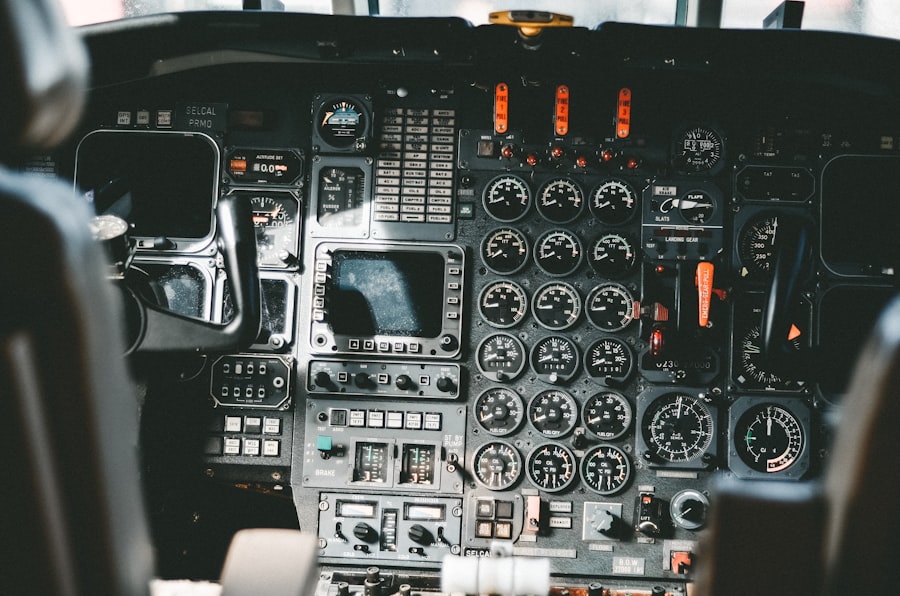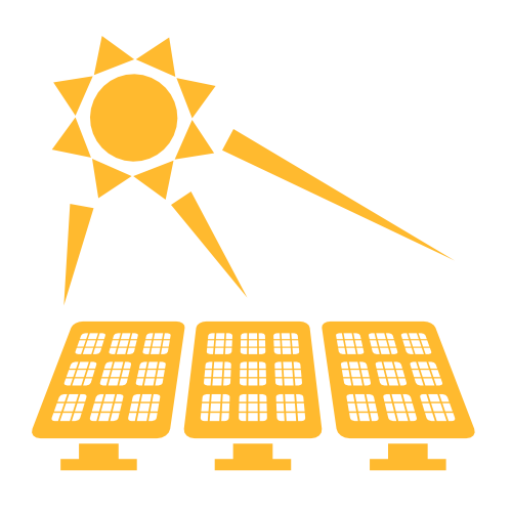Solar Impulse is a groundbreaking project that has made history in the field of aviation. It is the world’s first solar-powered aircraft, designed to fly day and night without using any fuel. This innovative project has pushed the boundaries of what is possible in aviation and has the potential to revolutionize the industry. Solar Impulse’s journey across the Pacific Ocean was a major milestone in its mission to promote renewable energy and raise awareness about climate change.
Solar Impulse: The World’s First Solar-Powered Aircraft
Solar Impulse is a Swiss project that was initiated by Bertrand Piccard and André Borschberg. The aircraft, named Solar Impulse 2, is powered entirely by solar energy, using four electric motors and four lithium polymer batteries to store energy during the day for use at night. It has a wingspan of 72 meters, which is larger than that of a Boeing 747, and weighs only 2.3 tons, which is about the same as a car.
The significance of Solar Impulse lies in its ability to fly without using any fuel, thus reducing carbon emissions and promoting sustainable aviation. By harnessing the power of the sun, Solar Impulse has demonstrated that it is possible to fly long distances using renewable energy. This has opened up new possibilities for the aviation industry and has sparked interest in developing more efficient and environmentally friendly aircraft.
Solar Impulse’s Epic Journey Across the Pacific Ocean
One of the most remarkable achievements of Solar Impulse was its five-day journey across the Pacific Ocean from Japan to Hawaii. This was the longest leg of its round-the-world flight, covering a distance of 8,924 kilometers. The flight was not without its challenges, as the pilots had to deal with unpredictable weather conditions and limited energy reserves.
During the flight, the pilots faced strong headwinds and had to navigate through turbulent weather systems. They also had to carefully manage their energy reserves, as the aircraft’s batteries had to last through the night. The journey required meticulous planning and coordination between the ground team and the pilots, as they had to make strategic decisions to conserve energy and ensure a safe landing in Hawaii.
The Challenges of Flying a Solar-Powered Aircraft
Flying a solar-powered aircraft comes with its own set of challenges. One of the main limitations is the dependence on sunlight for energy. This means that the aircraft can only fly during daylight hours, and its range is limited by the amount of energy that can be stored in its batteries. This requires careful energy management and efficient use of resources.
Another challenge is weather forecasting. Solar Impulse relies on accurate weather predictions to plan its flights and avoid adverse weather conditions. This is crucial for the safety of the pilots and the success of the mission. Unpredictable weather patterns can pose a significant risk to solar-powered flight, as it can affect the availability of sunlight and create turbulence that can be dangerous for the aircraft.
Solar Impulse’s Groundbreaking Technology and Design
Solar Impulse incorporates innovative technology and design features that make it possible for the aircraft to fly using solar energy. One of the key elements is its lightweight construction, which allows it to stay aloft with minimal energy consumption. The aircraft is made from carbon fiber composites, which are strong and lightweight materials that reduce drag and increase efficiency.
Solar Impulse also features energy-efficient systems, such as LED lights and low-power avionics, which help to conserve energy. The aircraft is equipped with solar panels that cover its wings and tail, allowing it to capture sunlight and convert it into electricity. These panels are made from high-efficiency solar cells that maximize energy production.
The Importance of Renewable Energy in Aviation

The aviation industry is one of the largest contributors to carbon emissions, accounting for about 2% of global greenhouse gas emissions. This has led to increased efforts to find sustainable solutions to reduce the environmental impact of air travel. Renewable energy, such as solar power, has the potential to play a significant role in achieving this goal.
Solar-powered flight offers several advantages over traditional fuel-powered aircraft. It is a clean and renewable source of energy that does not produce any carbon emissions. It also reduces dependence on fossil fuels, which are finite resources and contribute to climate change. By harnessing the power of the sun, solar-powered flight can help to reduce the carbon footprint of the aviation industry and promote a more sustainable future.
Solar Impulse’s Impact on the Future of Aviation
Solar Impulse has had a significant impact on the aviation industry, inspiring innovation and change. Its successful round-the-world flight has demonstrated the potential of solar-powered flight and has sparked interest in developing more efficient and environmentally friendly aircraft. It has also raised awareness about the importance of renewable energy and the need to reduce carbon emissions in aviation.
Solar Impulse has shown that it is possible to fly long distances using renewable energy, challenging the notion that aviation is inherently unsustainable. It has inspired researchers, engineers, and entrepreneurs to explore new technologies and design concepts that can further improve the efficiency and performance of solar-powered aircraft. This has the potential to revolutionize the industry and pave the way for a more sustainable future.
The Role of Solar Impulse in Climate Change Awareness
One of the key objectives of Solar Impulse is to raise awareness about climate change and promote sustainable solutions in aviation. By demonstrating the feasibility of solar-powered flight, Solar Impulse has captured the attention of people around the world and sparked conversations about renewable energy and carbon emissions.
Solar Impulse’s round-the-world flight was not just a technical achievement; it was also a powerful symbol of hope and inspiration. It showed that individuals and organizations can make a difference in addressing climate change by embracing clean technologies and adopting sustainable practices. Solar Impulse has become a global ambassador for renewable energy, spreading the message that a sustainable future is within reach.
Solar Impulse’s Journey to Hawaii: A Milestone in Aviation History
Solar Impulse’s journey to Hawaii was a historic achievement in aviation history. It marked the first time that a solar-powered aircraft had flown across the Pacific Ocean, covering a distance of over 8,900 kilometers. The flight demonstrated the capabilities of solar-powered flight and showcased the potential of renewable energy in aviation.
The journey to Hawaii was not without its challenges. The pilots had to navigate through unpredictable weather conditions and carefully manage their energy reserves to ensure a safe landing. The successful completion of the flight was a testament to the skill and determination of the pilots, as well as the innovative technology and design of Solar Impulse.
The World Record Set by Solar Impulse’s Flight to Hawaii
Solar Impulse’s flight to Hawaii set a world record for the longest solo flight in terms of distance and duration. The five-day journey across the Pacific Ocean was a test of endurance for the pilot, André Borschberg, who spent over 117 hours in the cockpit. This achievement pushed the boundaries of solar-powered flight and demonstrated the potential for long-distance travel using renewable energy.
The world record set by Solar Impulse’s flight to Hawaii has inspired others to push the limits of solar-powered flight and explore new possibilities. It has shown that with the right technology and planning, it is possible to fly long distances using renewable energy. This has opened up new opportunities for research and development in the field of solar-powered aviation.
Solar Impulse’s Next Steps: Pushing the Boundaries of Solar-Powered Flight
Solar Impulse is not resting on its laurels after its historic flight to Hawaii. The project has ambitious plans for the future, including completing its round-the-world journey and continuing to push the boundaries of solar-powered flight. The team behind Solar Impulse is working on developing new technologies and design concepts that can further improve the efficiency and performance of solar-powered aircraft.
One of the key goals of Solar Impulse is to inspire change and promote sustainable solutions in aviation. The project aims to demonstrate that renewable energy is not just a theoretical concept, but a practical and viable option for the aviation industry. By continuing to break records and push the limits of solar-powered flight, Solar Impulse hopes to inspire others to embrace clean technologies and adopt sustainable practices.
Solar Impulse has made history in the field of aviation with its groundbreaking achievements in solar-powered flight. The project has demonstrated the potential of renewable energy in aviation and has inspired innovation and change in the industry. Solar Impulse’s journey to Hawaii was a major milestone in its mission to promote sustainable solutions and raise awareness about climate change.
The world record set by Solar Impulse’s flight to Hawaii has pushed the boundaries of solar-powered flight and has shown that long-distance travel using renewable energy is possible. This achievement has opened up new possibilities for research and development in the field of solar-powered aviation.
Solar Impulse’s journey across the Pacific Ocean was not just a technical feat; it was also a symbol of hope and inspiration. It showed that individuals and organizations can make a difference in addressing climate change by embracing clean technologies and adopting sustainable practices. Solar Impulse has become a global ambassador for renewable energy, spreading the message that a sustainable future is within reach.
In conclusion, Solar Impulse has made a significant impact on aviation history and has the potential to revolutionize the industry. Its achievements in solar-powered flight have demonstrated the feasibility of renewable energy in aviation and have inspired others to push the boundaries of what is possible. By promoting sustainable solutions and raising awareness about climate change, Solar Impulse is paving the way for a more sustainable future in aviation.
Check out this related article on how the Inflation Reduction Act can help EV drivers save money on their energy costs. With the increasing popularity of electric vehicles, it’s important to find ways to reduce expenses associated with charging them. This article explains how the Inflation Reduction Act provides incentives for EV owners to switch to solar energy, resulting in significant savings. To learn more about this topic, visit https://www.wichitasolarsales.com/how-inflation-reduction-act-can-help-ev-drivers-save/.
FAQs
What is Solar Impulse?
Solar Impulse is a Swiss long-range experimental solar-powered aircraft project, and also the name of the project’s two operational aircraft.
What is the purpose of Solar Impulse?
The purpose of Solar Impulse is to demonstrate the capabilities of renewable energy and to promote the use of clean technologies.
What is the world record set by Solar Impulse?
Solar Impulse set the world record for the longest solo flight ever recorded, flying non-stop for 117 hours and 52 minutes.
Where did Solar Impulse land to set the world record?
Solar Impulse landed in Hawaii to set the world record for the longest solo flight ever recorded.
How is Solar Impulse powered?
Solar Impulse is powered by four electric motors that are powered by 17,248 solar cells that are mounted on the wings.
What is the maximum altitude that Solar Impulse can reach?
Solar Impulse can reach a maximum altitude of 28,000 feet.
What is the maximum speed that Solar Impulse can reach?
Solar Impulse can reach a maximum speed of 90 mph.
What are the benefits of Solar Impulse?
The benefits of Solar Impulse include promoting the use of clean technologies, demonstrating the capabilities of renewable energy, and inspiring innovation in the field of aviation.

